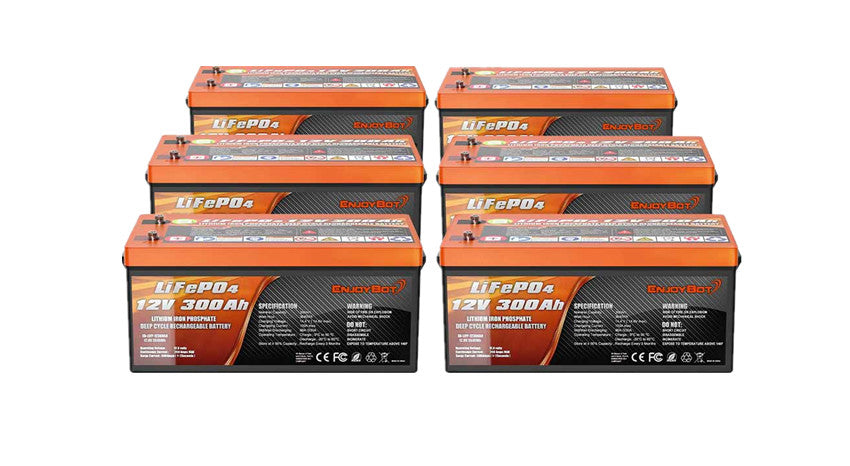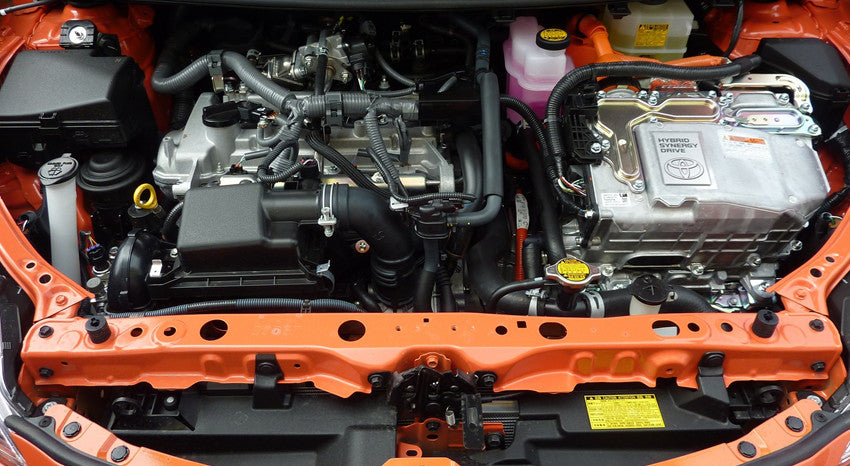Deep cycle Battery & Starting Battery
Deep cycle battery & Starting Battery
Batteries did so much help for us, from starting our vehicles to powering our LED lights during power outages. But different types of batteries might have dramatically different strengths and intended uses. And for those who aren’t particularly knowledgeable about tech, it can get a little confusing. The batteries that people use most in their daily life are deep-cycle batteries and starter batteries. But what is a deep-cycle battery and what is a starter (cranking) battery? Let’s find out.
What is the difference between deep-cycle batteries and starting batteries?
Deep-cycle batteries have less instant energy than Starting batteries, but greater long-term energy delivery is needed for traveling distances. Starter batteries have no stable and continuous power, but only support explosive energy for a short period of time.
What is a Deep Cycle Battery?
Deep-cycle batteries are designed to provide reliable and continuous power, their depth of discharge level is able to arrive at 80% - 98%. They can be discharged reaching this level time after time without any damage or minimal loss of capacity because they are constructed with thicker solid plates which reduce the instant starting power of the battery. That means they enable to handle the constant cycling. In other words, deep-cycle batteries have an increased cycle life at a lower DOD.
These batteries are perfectly used for powerhouse loads, trolling motors, golf carts, RVs, Vans, camping, solar systems, off-grid, etc. You can get the best of both worlds with dual-purpose batteries, but if you are looking for batteries that will last longer in your trolling motor, then be sure to check out deep-cycle batteries. All Enjoybot batteries are deep-cycles.
What is a Starting Battery?
Starting (or cranking) batteries are designed to deliver a large burst of power for a short period of time. Their plate structure also differs greatly from that of deep-cycle batteries. The cranking battery's plate is much thinner and the sponge texture is not a thick solid plate. It is a porous sponge material that provides a very large surface area for the active material to generate power.
Starting batteries are only discharged between 2% and 4% on average, and they will lose their capacity after experiencing hundreds of cycles.
This is because the thin spongy plates of the starting batteries are not designed to withstand cycles below 2% - 4%. Additionally, if people use a starting battery as a deep-cycle battery, it will fast shed the sponge material to its plates, and consume the capacity leading to damage.
Deep-cycle batteries cannot be start batteries, the problem is not the batteries themselves, is about how that car engine and alternator work. For example, when you turn the key to start your car, the starting battery needs to release a very large current, which can be a few hundred amps to start your engine, even though this process only lasts for a second or two, it probably blow the BMS board in your lithium batteries.
When the engine gets started, it will turn the rotor in the alternator, but the alternator has no magnates, and cannot charge on its own. You have to apply 12 volts from the battery to the field coil on the alternator to get it to start. The alternator generates an electric current which is sent to the voltage regulator. The voltage regulator will convert it from AC to DC and sends it back to charge batteries and power devices in the car.
Lithium batteries are built-in BMS that will monitor all the operation parameters of battery cells. If the parameter exceeds the programmed specification, it will completely shut down the batteries you are using.
Additionally, the alternator and regulating circuit in cars are designed to charge lead-acid batteries, not lithium batteries. Typically, the alternator will be around 14.7 volts, it could reach as high as 15 volts. Therefore the BMS runs a risk of shutting down the battery from over-voltage.
So what will happen if your lithium battery shuts down while the engine is running? Let's take a look. When your starting battery is shut off, you will see an instantaneous spike from the alternator, even though it lasts only for a few milliseconds that will possibly lead to a detriment to your computer system, sensors, and all electrical circuit in your car. The greatest risk of damage from voltage spikes is going to be your ECU, which is a tiny computer under or behind the dashboard that collects data from all those sensors and manages the entire computer of your vehicle. That ECU can be anywhere from a few hundred to a few thousand dollars to replace depending on your car.
Conclusion
The main difference between starting batteries and deep-cycle batteries comes down to the construction of the plates. Deep-cycle batteries will have fewer but thicker solid plates that will generate low instant starting power but consistent long-term power. Starting batteries have many more plates that are thinner and porous enabling them to produce a strong instant power for a brief period of time which rapidly diminishes the longer the battery is cycled.



















![[Upgraded Version] Enjoybot 14.6V 20A Waterproof Mountable LiFePO4 Lithium Battery Charger For 12V LiFePO4 Battery](http://enjoybot.com/cdn/shop/files/14.6V_20A_Waterproof_Battery_Charger_1_360x.jpg?v=1752565609)
![[Upgraded Version] Enjoybot 14.6V 20A Waterproof Mountable LiFePO4 Lithium Battery Charger For 12V LiFePO4 Battery](http://enjoybot.com/cdn/shop/files/14.6V_20A_Waterproof_Battery_Charger_2_360x.jpg?v=1752637374)















